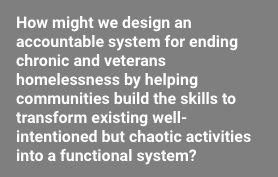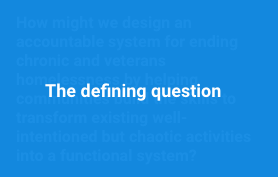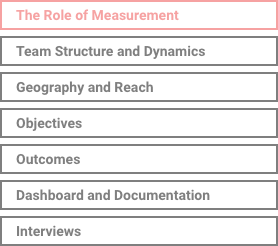How to Read the Case Studies
Hover over areas within the case study sample shown for an explanation of the information and sections included.

























The RFP
There is an inevitable tension between wanting to know as much in advance of funding a project as possible while leaving “room” to discover more relevant and appropriate questions and answers as the process evolves. One key aspect of social design is that assumptions emerge from contextual observations and human-centered research. When done well, the answers cannot be known in advance.
The proposal requests here have been provided by funders as examples of how to incorporate a social design approach. Please send us examples of RFPs that contribute to learning and conversation about how to best include social design.
Feed the Future Global Food Security BAA Solicitation
USAID Tuberculosis Monitoring and Evaluation Associate Award
The Neighborhood Activation Study
USAID Maternal, Newborn and Child Health services outcomes research
The Global Fund Programs to reduce Barriers to HIVE, TB and Malaria Services
Start Here
If you plan to use social design in your initiative to support human health and wellbeing, you should measure it, ideally in all the ways articulated on this site. Hopefully, we have made that case convincingly.
If you’re not sure whether or not you need to integrate the social design process in your project, ask yourself these questions. The answers will help you decide.
1. Is the problem you’re trying to solve a technical or complicated one? In other words, could it be handled by a group of experts working alone or with other experts?
2. Is the problem you’re solving a complex one? In other words, is human agency a factor in whether your idea or intervention will be a success?
3. Do you think you already know pretty much everything about your intended audience?
4. Are you looking to achieve real equity? Meaning, do you care about the last hard-to-reach 20% of the population affected?
If you answered Yes to question 1, you don’t need social design. If you answered yes to questions 2, 3, or 4, your work will benefit from the contribution of designers.
If you want to know more, we’ve included a bibliography.
If you’d like to stay engaged with this project of measuring the difference design makes, please contact The Measured Group.